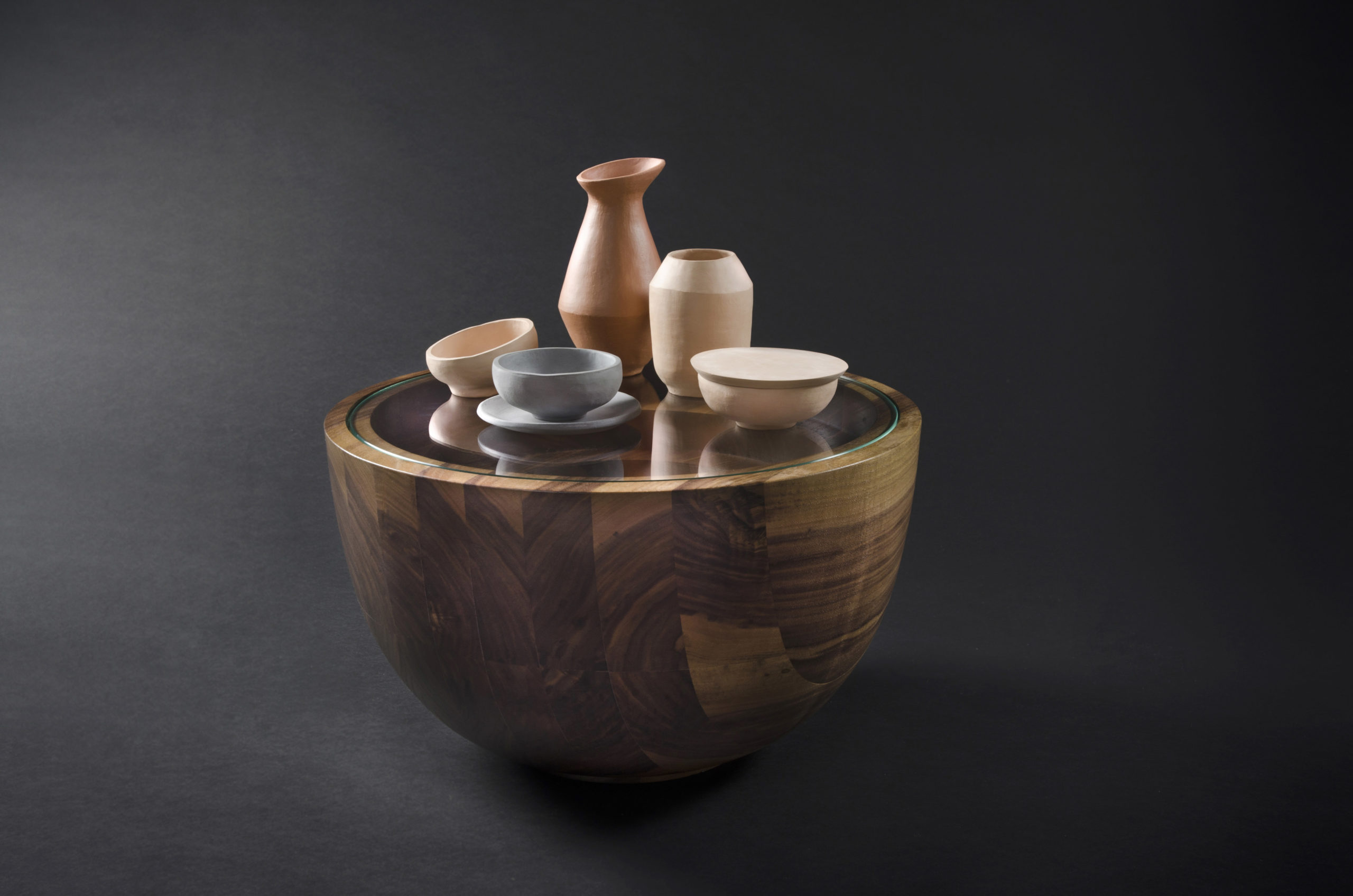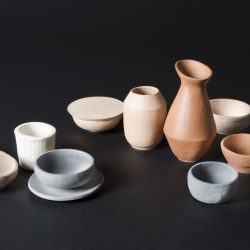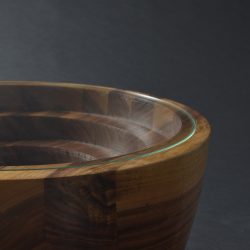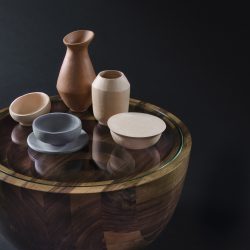Vaterland und Mutter Erde, die Heimat im Objekt
Description
My project “Vaterland und Mutter Erde, die Heimat im Objekt”, which can be translated as: “Fatherland and Mother Earth, the representation of home in the object.”, consists of a wood turned table representing “Mother Earth” and Vessels which were produced in collaboration with people who immigrated to Germany.What is the Topic?
In this project, I want to take a stance on immigration, that aside from our politically defined and divided “Vaterländern” (fatherlands), we all have a common home: mother earth. The influx of debates on the so called “refugee crisis”, particularly that a persons identity is often defined on borders and affiliation dependent on geographical origin, is my motivation for this project. I introduce an alternative point of view of “Heimat” and evaluate perspectives from those who immigrated to Germany. Through interviews and participative workshops, I interwove my interviewees into the design process. The produced ceramics transports the feeling of home.
Why does it look like this?
The hues of clay are representative for the individual diversitiy amongst the participants. The project is inspired by objects that the participants associate with their “Heimat” and by their personal experiences. Therefore, each vessel created is a symbolic portrayal for each participant. In the combination of tableware, each vessel stands for its own and has its own significance and importance. The solidity of the table produces a feeling of a base, security and stability. The levels inside the table represent the social classes and the glass tabletop raises each object to the same elevation.
What is special?
It became apparent for me that each participant’s food culture and the ‘taste’ of “Heimat”, plays an important role in relation to their feeling of home but also had a great role in our get-togethers. I experienced plentiful of hospitality through abundantly laid tables during the course of our meetings. Eating together became a symbol of sharing, not only food but also stories, a symbol of growing solidarity and community. Furthermore, community became an essential part of the whole project. The feeling of home is closely connected with the emotional bonds to other people and the feeling of belonging and so thematically, conceptually as a participative workshop, and metaphorically - community played a great role. The objects and people behind the objects can stand individually or as a diverse community and in our get-togethers, our open-minded conversations created a feeling of trust, solidarity and community.
What is new?
With my project I challenge the term “Heimat”, I take a new perspective and make an innovative contribution to the discussion about “Heimat”. The political “AfD”-party, which campaigned with sentences like “Heimat statt Multikulti” (“Heimat instead of multicultural”), tries to create a picture where ethnological diversity is a danger to the German “Heimat”. I create a visualisation, which generates versatility and heterogeneity as an enrichment for an individual and for community. In my creative approach the vessels visualise different cultures harmonising together. This project brought people together actively at one table, also understandable in a metaphorical sense.




